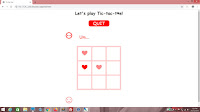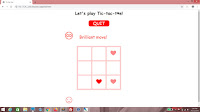And they're absolutely right.
Therefore, here are some questions to ask during a tech interview; indeed, any job interview. You may notice that all of these questions are pretty much the same questions that interviewers seem to love asking candidates. That's not a coincidence, and believe it or not, no, I'm not being facetious. Those are some pretty relevant questions a candidate needs to ask.
Also, if an interviewer is asking the candidate these questions, it stands to reason that they think these questions are important and as such, they shouldn't mind having these questions turned back on them. Turn-about is fair play, right?
1. Where do you see this company in five years?
It's a question best asked of someone in Management. Perhaps the CEO or COO. The question is also better phrased as "what is the general plan for this company in five years to ten years?"This, obviously, is an inversion performed on the classic interview question "where do you see yourself in five years?" The only difference is, it's far more important for a company to be able to answer that question, than it is for an employee.
You see, it's not that vital for an employee to have a career plan. Plenty of programming jobs can be done quite ably by people who don't have a career plan. To some people, a job is simply just a job, and they'll look at you funny if you suggest that they ought to have some kind of plan in mind.
 |
| What's the direction? |
But that's one employee. A company is made out of multiple employees. It's still feasible for all these employees to not have career plans (though I would not recommend it), but what if the company itself doesn't have a plan? What if the company has no idea what general direction it's heading towards? You can learn a lot about the company you may be joining, by learning more about its plans. Or lack thereof.
2. Why did the last employee leave?
This is an inversion of "why do you intend to leave your company?". It really depends on whether you're filling a vacancy. If so, it's a question that HR needs to answer. Try to couch it in more neutral language such as "What was the official reason my predecessor provided for leaving?"The answer isn't the important thing here - the purpose of this question is to observe HR to see how she (pardon me, I've never encountered male HR for some reason) answers it. Is she evasive or defensive? Forthright? Reeking of politically correct bullshit? Or worse, is she somehow surprised that you would dare ask this question?
 |
| Why'd your predecessor leave? |
This tells you the nature of HR in the workplace. Are they Management flunkies, or actual professional HR personnel? You'll want to be prepared either way.
Also, it's a penetrating question that shows your interviewer that you're already thinking about what it would be like to work there. It shows that you want to be aware of any potential pitfalls you may encounter in the workplace.
3. What are some of the challenges you face at the job?
This one is best posed to a potential co-worker, if one happens to be at the interview. If not, the Hiring Manager should have a fairly good idea as well. It's a inverted version of the question some interviewers may ask of you, to gauge your problem-solving ability. |
| What are the obstacles? |
However, the purpose here is not to gauge the ability of your potential co-worker, but to find out what you will be dealing with at the workplace. The line of questioning may yield some interesting answers. Some companies deal in big data and their main challenges involve data visualization. Some have security issues. Some may encounter difficulties explaining concepts to non-technical people.
More importantly, it expresses a desire to be useful. By asking this question, it gives the impression that you're thinking about how best you can contribute. It's indirectly asking the company what you can do for them, instead of what they can do for you. In fact, if asked why you asked this question (not that I think anyone with a single working brain cell needs this to be explained), you should totally tell them this.
4. Why should I join this company?
Now this is a reversal of the classic question "Why should I hire you?" or "Tell me your greatest strength." With those questions, the interviewer wants you to sell yourself.Asking that question back in turn may be fair, but it can also come off as unreasonably arrogant depending on how it's phrased. This can be asked of a Manager. "What are some of the biggest selling points of being employed by this company?" This gives them a chance to brag, and despite what they tell you, people love to brag.
 |
| Why should I join your team? |
Now, if this is asked of a potential co-worker, consider asking this instead - "Personally, from your point of view, what are some of the best things about this company?" Not only are you asking him or her for a personal opinion, it also implies that you're interested in him or her as an individual. People take to that.
5. Why should I not join this company?
And of course, naturally, we'd have to explore the reverse of the last question - "Tell me your weaknesses." The purpose of this question, again, varies depending who is asking that question, and who is being asked. Interviewers who ask this question usually want to see if the candidate has both self-awareness and honesty. But when you ask the interviewer this question, you may want to phrase it like this - "What are some of the reasons I might not want to join this company?" |
| What's the catch? |
Look, it's a no-bullshit question. Everyone is aware that nothing is perfect. Therefore, anyone asking this question of the interviewer is most likely sincerely trying to manage his or her own expectations. And honestly, only candidates who are somewhat serious (or at least trying to give that impression) about their application would ask this.
Also, asking this question gives you a chance to brag, in turn. For example, if the interviewer says something along the lines of "sometimes deadlines need to be met and there's OT", this is the perfect opportunity to shrug and give a "been there, done that" response.
All in all...
These are fair questions to ask, especially since interviewers consider them fair questions to ask you. Be respectful and professional, but ask those questions.
Any questions?
T___T
T___T























